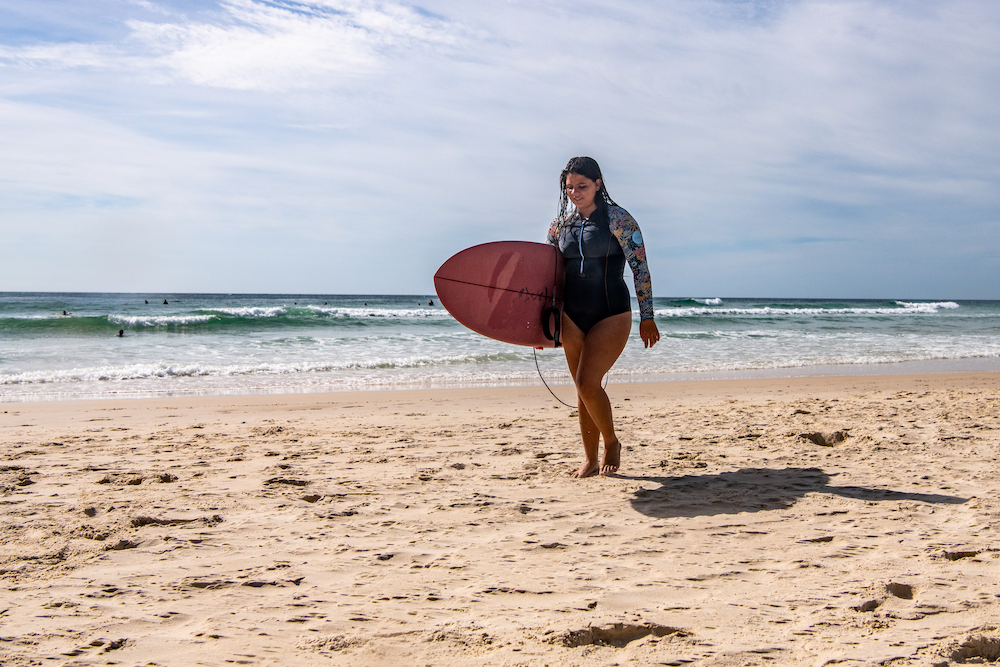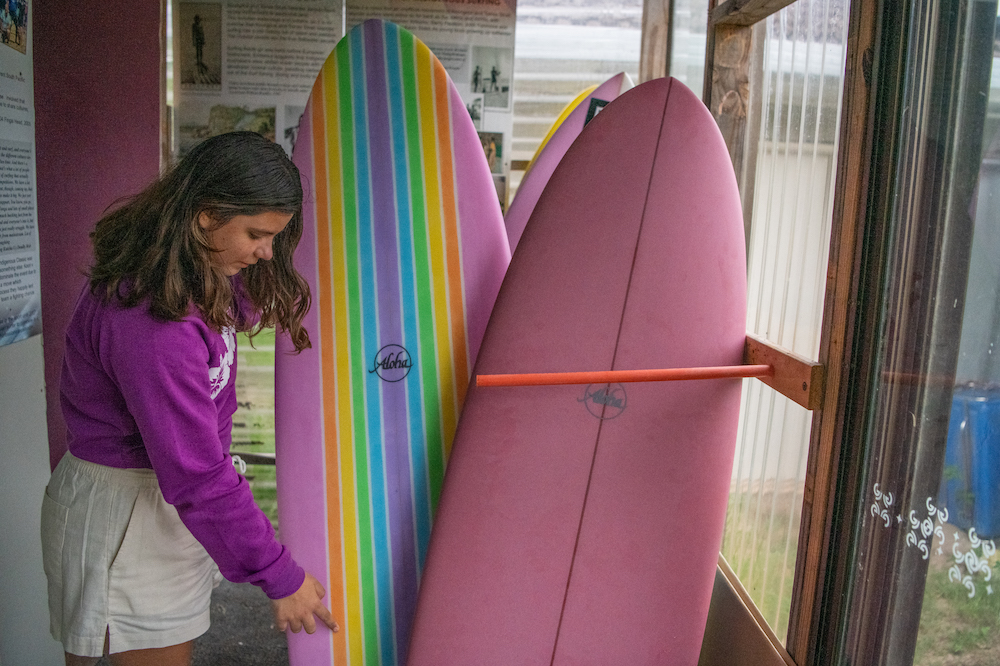
We meet 17 year old Jalaan Slabb, the New South Wales surfer and shaper born-and-bred in Fingal Head, who is making waves in the industry for her far-out designs and unique approach to shaping.
I’m speaking to 17 year old board-shaping prodigy Jalaan Slabb via Zoom from her home in Fingal Head on the East Coast of Australia, an area which has just suffered some of Australia’s worst flooding for over a century. Beloved communities and towns from Lismore to Byron Bay and beyond were completely submerged, with the shocking devastation a sobering and stark manifestation of the critical challenges our climate is facing. Our interview was in a brief hiatus whilst power outages struck much of the region. Thankfully though, Jalaan, who lives with her family surf-side in New South Wales, is fine, and we were able to pick up our interview where we left off…
Slabb has been making a name for herself in the shaping community. Under the wing and tutelage of her shaping sensei Chris Garrett of Phantom Surfboards, her work has been noticed by an A-list roster of pro-surf talent, with the likes of Mick Fanning and Tyler Wright both reaching out for boards. She’s currently busy in her custom pink shaping bay, working on a board for multiple world champion and Olympic gold medalist Carissa Moore, and has had big brand names including the likes of Roxy and Aloha recently come calling.
In an industry that has long been male dominated, the last few years have seen a rise in female shaping talent, including the likes of Valerie Duprat of Mére-Made surfboards and Cher Pendarvis of Furrow Surfcraft. Slabb, as a teenager and Indigenous Australian woman, is quite possibly in a minority of one, among the already tiny faction of women who make up shapers globally. Her Indigenous heritage (she is a part of the Coodjingburra clan of the Bundjalung nation, whose ancestral lands include Fingal Head) means a deep-rooted appreciation and respect for the earth and ocean. As I soon discover, this has long been a guiding force in both her life and work…
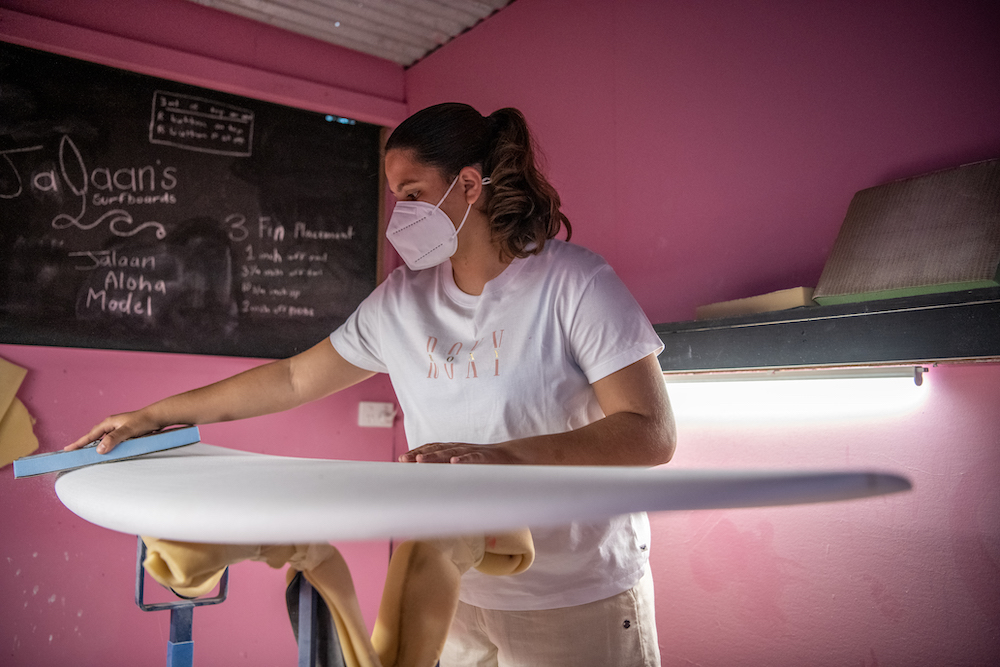
SE: How are you doing Jalaan? How is everything in Australia after the floods?
JS: We’re doing good. I think that we’re finally finishing off the cleanup of everything. It’s actually pretty crazy, one of the biggest floods I’ve seen in my life. We could paddle up my road and we’ve never been able to do that. Hopefully everything gets back to normal soon and everyone’s good.
SE: Let’s start at the beginning. Tell me about where you’re from and where you grew up?
JS: I grew up in Fingal just on the East Coast of Australia, New South Wales. I’ve never moved out of Fingal, it’s just a crazy nice place. There’s only one way in and one way out. There’s a river and a beach on each side of Fingal, so that anywhere you go, you go to water. My family all grew up in the water and we all surf and are fishermen. There was always a kid out in the surf or someone fishing on the beach.
I live in a family of six. I have a younger sister and two brothers. My brother is a singer and my little brother is a boogie boarder. My sister is also a surfer and my Dad surfs. My Mum is from the country, so she grew up more in the countryside of Australia. She moved up here and fell in love with the ocean.
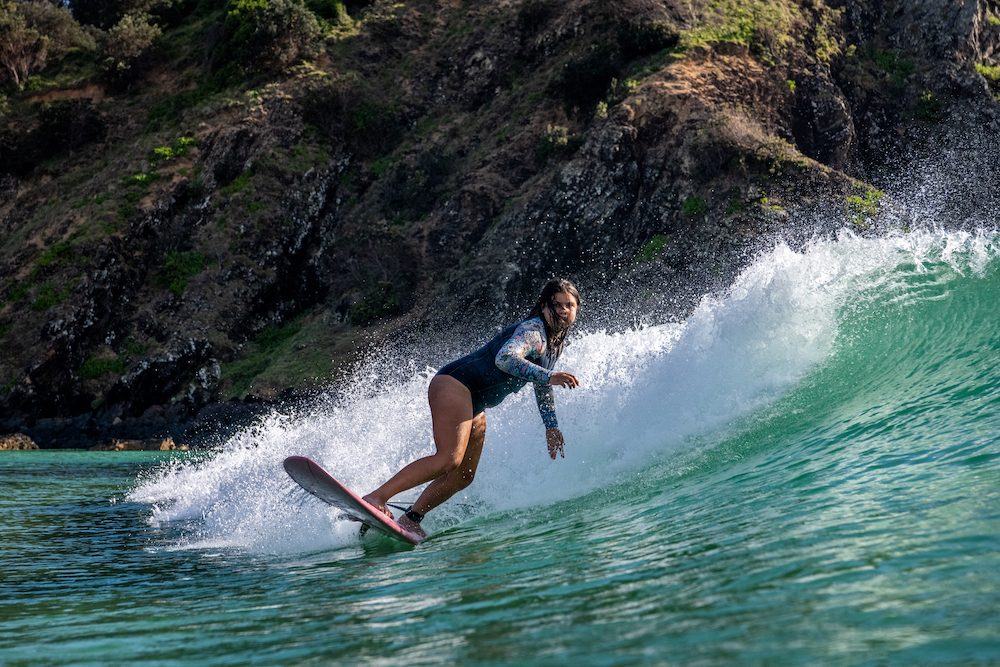
SE: That’s amazing, it sounds like you’ve got a really rich heritage! Tell me about your background and that part of your life.
JS: I’m actually Aboriginal. My tribe is the Bundjalung tribe. I’ve always grown up learning about my culture and how to live in this culture, respecting the land, the ocean and everyone around you. Culture is a really big part of my life. It’ll be good to be able to pass the knowledge down one day that we’ve got from our older people to our younger people. I always want to be able to pass down what I know about the ocean to younger generations. Hopefully, they then pass it down to their younger generation and it just keeps going.
SE: When did you start surfing?
JS: I started surfing when I was two years old. I’ve been in the water all my life and that’s really connected me with the ocean growing up.
SE: That’s amazing! Are you still at school?
JS: I’m not at school anymore, I just got really busy with surfboards and working all the time! I was homeschooled in High School, but there’s a little primary school down the road with only 40 kids and most of them were my cousins! That was pretty cool. We got to walk to the ocean and just go for a surf after school.
SE: Tell me about Juraki Surf…
JS: Juraki Surf Culture is an organisation to help young Aboriginal surfers. My parents actually started it. If anyone wants to learn about the ocean and culture, they can come. We have our little crew and they’re all amazing kids. Juraki actually helps kids prepare for competitions mentally and physically. I think it’s very good for young kids to have people there to support them, and always know that they have someone behind them at all times.
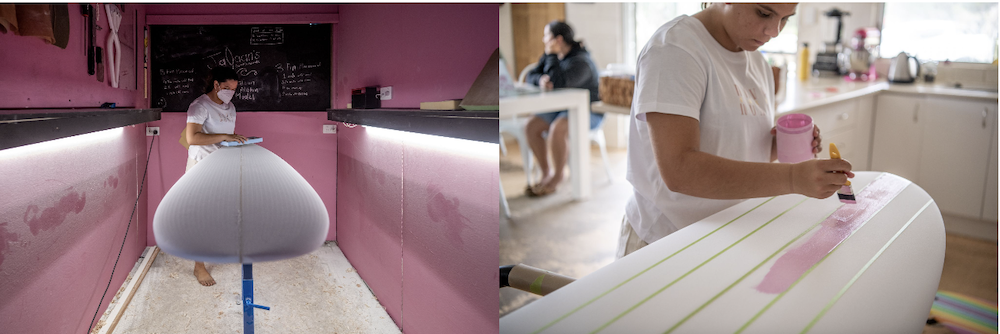
SE: So, you’re 17 years old and you’re already making quite a name for yourself as a shaper! Tell me about how that started. What introduced you to shaping?
JS: I actually started with Juraki Surf. They did a shaping mentoring project where they got a bunch of kids to come into a shaping bay with the local shaper and shape a surfboard from beginning to end. I was one of those kids and I really found a love for it. I came out of it and I’m like ‘Mum, Dad, I really love shaping, I think I want to be a shaper’ and they’re like, ‘Yeah, let’s do that!’ They’ve been really supportive, and have helped me from the beginning.
I made my first surfboard with local shaper Chris Garrett. He really helped me with the programming and with the shaping. He actually let me shape in his bay, and so I shaped my first board with him. From there, I started making more and more boards, and then it just got more crazy… I even shaped a surfboard for Tyler Wright! I remember lying in my room playing with my phone and the notification came up from Instagram saying she wanted to order a board and I freaked out, I couldn’t believe it! From there I got more and more orders. I’m pretty stoked with it!
SE: Tell me about your style of boards and what makes them unique to you as a shaper?
JS: I really like colour the most. I like to use a lot of colour with the paint jobs because my name actually means ‘rainbow’ in Bangla. I just love bright colours. I made a heap of fun-boards for my first boards; fishes, really wavey boards. Then I made longboards, shortboards, all different shapes of boards. I’ve always loved different shapes of surfboards. I like to be out there with the biggest longboard one day and the smallest board the next, and I’ll always change boards.
I also like to watch a surfer before I create their surfboard just to see how they surf, and how they move with the ocean. I’ve always liked seeing how people are in the ocean. I think with surfing, you have to know what the ocean’s doing and you want the ocean to respect you, as you respect it.
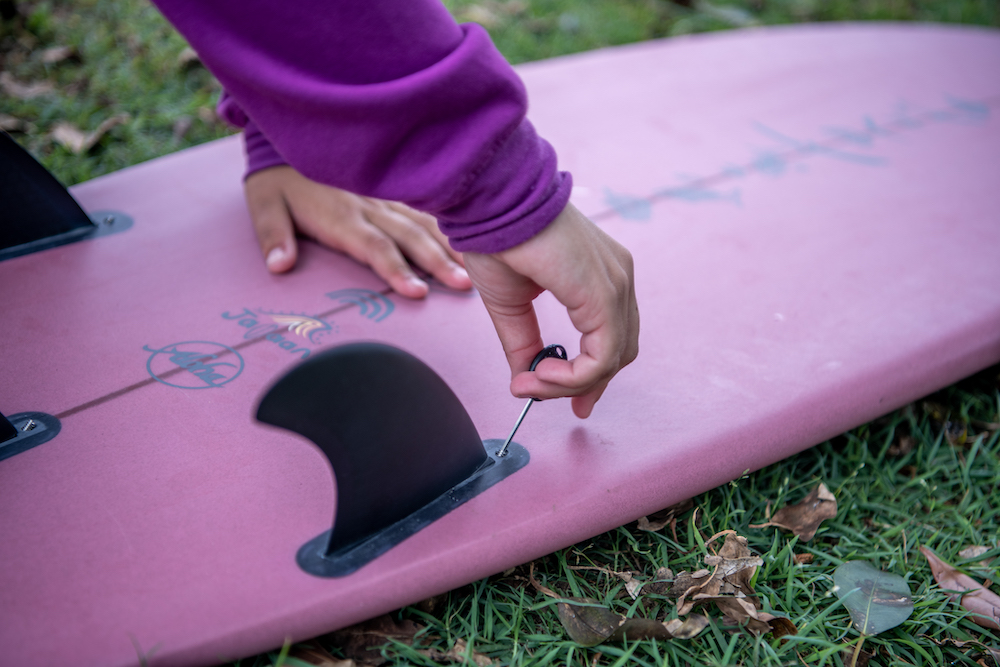
SE: Are you still working with your mentor Chris in his bay?
JS: I still work with him, but my Dad actually made me a shaping bay just at the back of my place. I actually have a pink shaping bay. I went to a lot of shaping bays before mine and I remember a lot of them were blue. So, we made ours pink and it came out really good! I’ve always loved pink and it just shows that I’m a little bit different to everyone else.
SE: What kind of techniques are you using?
JS: I use the shaping program AKU Shaper. I’m really lucky to have done a little tutorial with one of the co-founders of AKU, Jimmy Freese. He showed me how it all worked and how to use all the little cheat codes and everything like that. He was really helpful. I get them cut from the machine, then I get them back and I shape them and take them to a glasser.
SE: Are there any shapers who you really look up to?
JS: I really look up to Chris Garrett and I’ve always liked Jon Pyzel surfboards, but since I’ve started shaping I’ve actually met a lot more girls who are starting out too. I’ve met Shaped by She, who’s a hand shaper and she actually has really nice longboards. It’s really good to see more girls getting interested in shaping. I’m stoked to be a part of that community of young female shapers.
SE: Do you feel like there are enough opportunities for young Australian Aboriginal teenagers or kids who want to get involved in the surf industry?
JS: I think Juraki is very supportive, they will support anything that any Aboriginal shaper or surfer wants to do. I think it’d be amazing to see more Aboriginal shapers out there. The Indigenous community is very small. I think it’s really good to see all these industries, businesses and nonprofits helping out with Indigenous youth surfers.
SE: What’s a typical day for you now?
JS: At the moment I’ve been doing a lot of work. I’m shaping some custom boards and I’ve actually been working with Roxy a lot. I’ve been working with them for a year and a half now making surfboards. I’m also working with Aloha on a collab with a surfboard that’s coming out called the Peanut – that’s pretty exciting!
I have to get out and surf every day because I just feel like I can’t work without a surf. It sets my mood.
